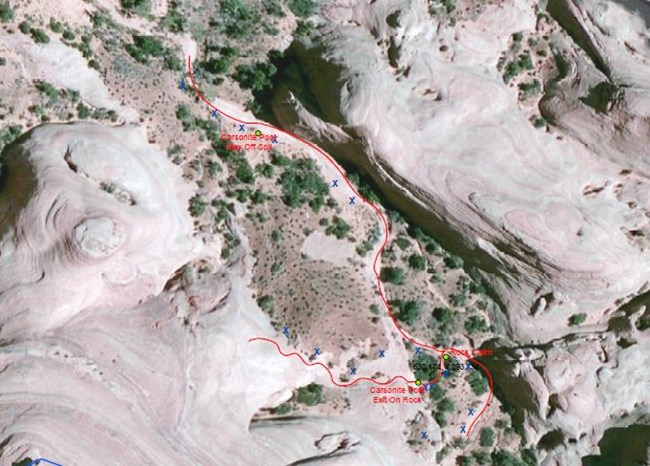
NPS/Ortiz
Throughout the park, staff build cairns to mark routes, use wood and other materials to block social trails, and erase damaging off-trail footprints. Canyoneers can help by staying on designated routes, avoiding social trails, and respecting cairns by not knocking them down or adding additional rocks. Accessing or exiting canyoneering routes on soil crust should never be an option. Well-developed soil crust will not regenerate itself in our lifetime. Soil crust is essential to this desert for contributing soil stability, soil moisture, soil fertility and soil temperature. Disturbed crust leaves the soil underneath exposed to blowing or washing away. Crust located next to footprints is indirectly damaged; its photosynthetic organisms die when buried by blowing sand. Research has linked higher dust rates in the desert southwest (caused by surface disturbance) to faster snowmelt in the Rockies and the San Juan Mountains. Locally, eroded gullies through soil crusts also reduce the amount of water available for nearby plants and microorganisms. Canyoneers can do their part to protect park resources by being land stewards, upholding Leave No Trace ethics and educating others to keep access open.

In recent years, Lost Spring has seen significant damage. Park staff delineated an exit route in 2012 using an existing drainage and slickrock, but by 2014 a number of new social trails had appeared. These new trails substantially damaged living soil crust and most of the previously blocked trails showed sign of recent use. Therefore, the following has been implemented to protect park resources:

NPS/Ortiz |
Last updated: May 30, 2021
